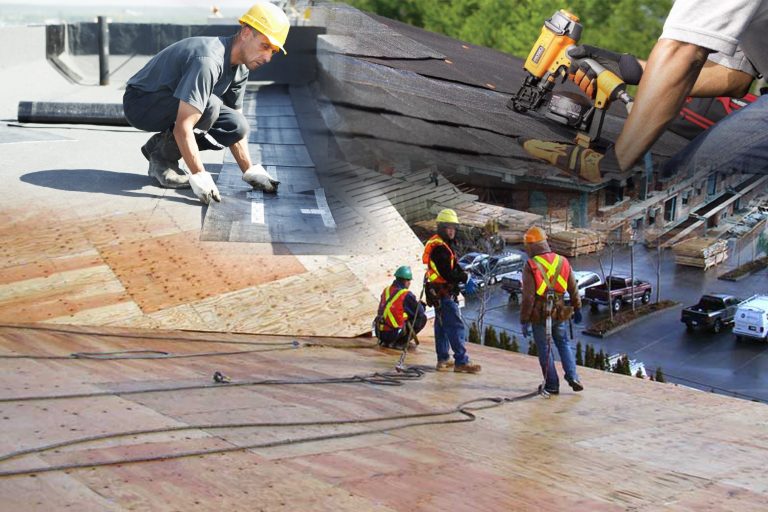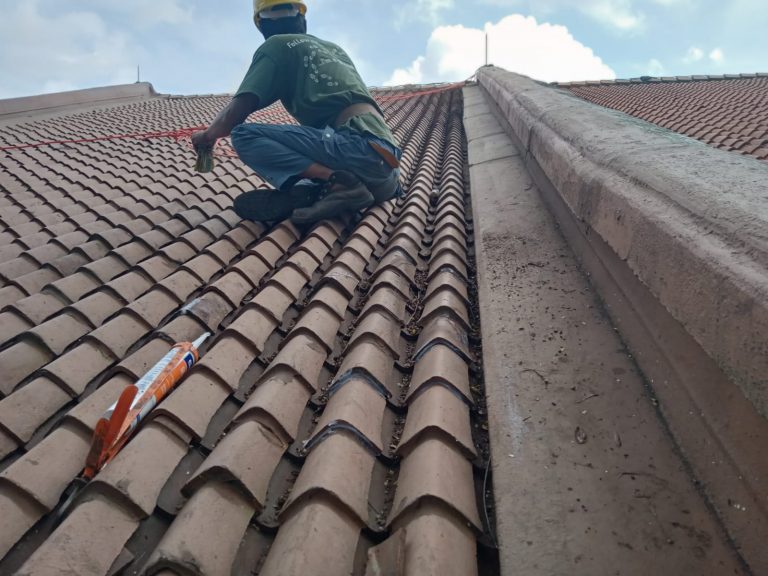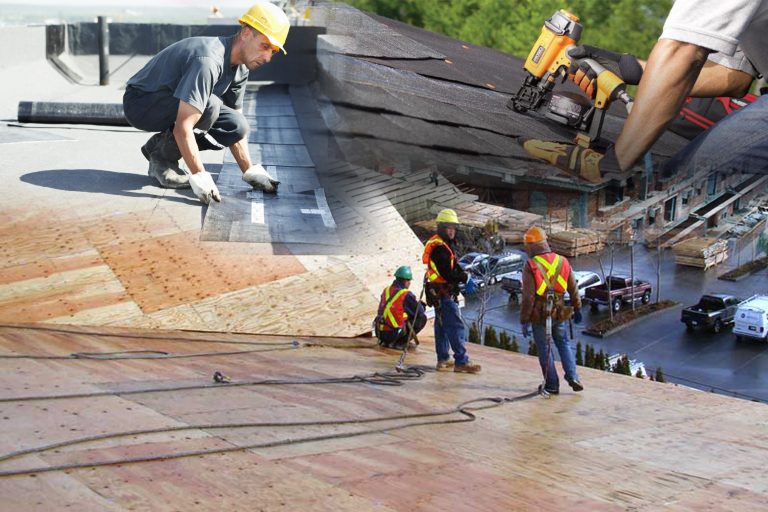8 Waterproofing Solutions to Fix Water Leakages in Singapore
Waterproofing makes a structure impenetrable by water or moisture. It is generally used in buildings, structures and other items to protect them from water damage and prevent mould growth or mildew. Waterproofing should be done to protect electronics and other sensitive items from water damage.
Waterproofing helps extend the life of the structure by protecting it from water and moisture damage. Waterproofing can also provide a degree of insulation from heat and cold, keeping the inside of the structure more comfortable and energy efficient. By preventing water from entering the structure and causing damage, wall and roof waterproofing can help to prevent cracks, leaks, and other structural problems. This can be especially important in areas prone to flooding or heavy rainfall.
Lastly, waterproofing can also help to improve the aesthetic appeal of a building or structure. Many materials used in waterproofing are attractive and can help improve a structure’s look. It can also help to reduce the amount of maintenance that is needed to keep a structure in good condition.
Signs of Water Leakage In Your Home
Water leaks can cause extensive damage to your home, resulting in costly repairs. Knowing the signs of water leakage in your home can help you identify problems and address them before they become more serious. Here are some of the signs to look out for –
1. Unexpected Increase in Your Water Bill – A sudden, unexplained increase in your water bill could signify a hidden leak. Check for any visible signs of water damage, such as discoloured walls, wet carpets, or water spots on the ceiling, and contact a plumber ASAP.
2. Musty Odour – This can indicate mould and mildew growth. Check for any visible signs of water damage and any areas that may be damp.
3. Visible Water Damage – Water stains, discoloured walls, or warped floors can be a sign of water leakage. Make sure to look in hard-to-reach areas, such as behind furniture or appliances.
4. Dripping Faucets or Pipes – If you notice that a faucet or pipe is leaking or dripping, it is important to address it as soon as possible. A leaking pipe or faucet can signify a more serious issue.
5. Erosion Around the Foundation – If you notice that the soil around the foundation of your house is eroding, it could be a sign of a water leak. Check for any visible signs of water damage, such as water spots or stains.
By knowing the signs of water leakage in your home, you can take steps to address the issue before it becomes more serious and costly. Contact a professional plumber if you notice any of the signs mentioned above.
Additional Read: Roof Water Leakage Repair Method For Your Roofing Issues
Types of Roof Waterproofing Treatments
Penetrative Waterproofing Treatment
Penetrative waterproofing treatment is a process used to protect structures from water and moisture damage. It involves treating the surface of a structure with a special liquid waterproofing material that penetrates the pores of the surface and forms a barrier against water. This barrier prevents water from entering the structure and causing damage. This treatment is often used on foundations and walls of buildings to protect them from water damage. It is also used to protect swimming pools, bathrooms, kitchens, and other areas exposed to moisture. This treatment is cost-effective and reliable.
Cementitious Roof Coating
Cementitious roof coating is a type of roof coating made from cement-based materials. It is a durable and long-lasting coating that can be used on various roofing substrates. Cementitious roof coatings are typically applied in a two-coat application to provide a protective barrier against water, UV rays, and other environmental elements. The first coat of cementitious roof coating is usually a primer or base coat. The second coat is typically a top coat that provides additional protection and is available in a variety of colours and textures. This method is highly durable, providing excellent protection against the elements and is easy to apply.
Bituminous Roof Waterproofing
It is a popular choice for roofing, as it is very durable and long-lasting, with a lifespan of up to 25 years. It is also relatively easy to install and maintain, making it an economical choice for many homeowners. Bituminous roof waterproofing is composed of a base layer of asphalt or bitumen mixed with a top layer of a waterproofing compound. This combination helps to create a protective seal that prevents water from penetrating the roof and damaging the building’s interior. It helps prevent the growth of moss, algae, and mildew on the roof, which can cause long-term damage and reduce the lifespan of the roof.
Roof Tile Repair / Coating
A roof tile repair or coating is an important part of any home maintenance plan. Roof tiles are an essential element of a building’s structural integrity and aesthetic appeal, so it is important to maintain them properly. Roof tile repair or coating is often necessary to prevent water damage, restore the tiles to their original appearance, or protect them from the elements. The process involves cleaning the tiles, identifying and repairing any existing damage, and then applying a sealant or coating to protect them from the elements. Make sure that you hire a professional, as it can be dangerous if done incorrectly.
Cement Your Leak-Prone Cracks
Cementing leak-prone cracks is an effective way to seal up and prevent moisture, dirt, and debris from entering the cracks. The process involves combining cement, sand, and other materials to fill in the cracks and create a more stable surface. The cement is mixed with sand and water to create a paste-like consistency which can then be applied to the crack. Once the cement dries, it forms a strong bond and prevents moisture, dirt, and debris from entering the crack. In addition, the cement can also be covered with a sealant to increase its durability and weather resistance further. Cementing leak-prone cracks is a relatively inexpensive and straightforward process that can help maintain the surface’s structural integrity and reduce the risk of further damage.
Coat A Layer Of Asphalt On Your Cement Flat Roof
For this, ensure that the surface is clean and free of dirt and debris. Then, you’ll need to heat the asphalt to a temperature of around 300°F using a special torch. Once it’s hot enough, you’ll need to apply a uniform coat of asphalt, making sure to cover the entire surface. Finally, you’ll need to cover the asphalt with a layer of gravel or another material that will help protect it from the elements. It’s important to note that the asphalt should be applied in layers, allowing each layer to cool and harden before applying the next one. With proper installation, a layer of asphalt can provide a durable and waterproof seal for your flat roof that can last for many years.
Fill Cracks With A PU Injection
PU injection is a great way to permanently fill cracks in concrete walls, floors and other surfaces. It is a simple and effective method that involves injecting a polyurethane foam mixture into the crack. This mixture expands and seals the crack, preventing further damage and strengthening the surface. The PU injection is also watertight, ensuring no moisture can penetrate the area. This method is very cost-effective and can be used on various surfaces, including brick, stone and asphalt. It is also a fast and efficient process, and can be completed in a relatively short amount of time.
Coat A Layer Of Epoxy Resin On Your Floor
Coating your floor with epoxy resin is a great way to protect it from the elements and make it look great. Epoxy resin is a two-part material made up of a resin and a hardener that, when mixed together form a hard, durable, and waterproof coating. It is easy to apply, and can provide a high-gloss, shiny finish.
When applying epoxy resin to your floor, it is important to make sure the surface is clean and free of any dirt, dust, or debris so that the epoxy can properly bond to the surface. You will also need to use a special epoxy roller to spread the resin evenly and make sure it is properly cured. After the epoxy is applied, you should allow it to cure for at least 24 hours before walking on it. Doing this will ensure the epoxy is properly set and provide you with a long-lasting, beautiful finish.
Why Choose Us?
If you are looking for a reliable and experienced waterproofing contractor, then look no further! We have decades of experience in providing the highest quality waterproofing services to our customers, ensuring their homes and businesses are protected. Our highly qualified team of experts use only the best materials to ensure your waterproofing needs are met to the highest standards. We also offer competitive prices, so you can be sure you are getting great value for your money. Our commitment to customer service is second to none, and we always strive to provide you with a satisfactory and stress-free experience.
Additional Read: What are the factors I should consider before selecting a roofing contractor to repair my roof’s leaking?







